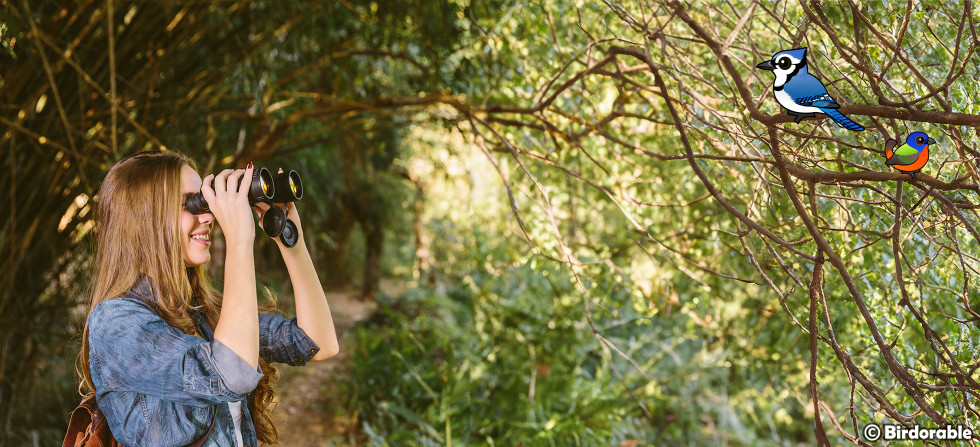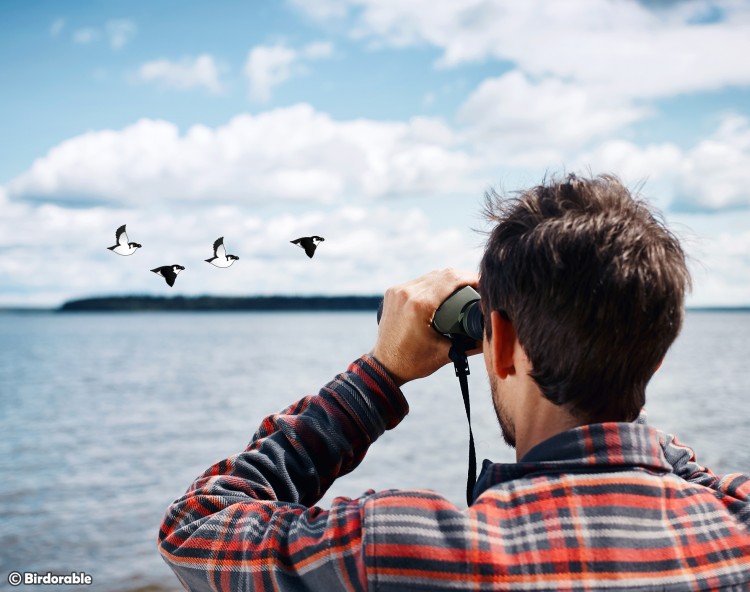Every Bird Counts: Participate in the Great Backyard Bird Count

Birdwatcher spotting 1 Blue Jay and 1 Painted Bunting
Every year, bird enthusiasts across the globe eagerly anticipate the Great Backyard Bird Count (GBBC), a citizen science project that offers everyone, from the casual bird watcher to the avid ornithologist, an opportunity to contribute to the understanding and conservation of bird populations. Scheduled to take place February 16 to 19, 2024, this event harnesses the power of community observation to create a real-time snapshot of global bird populations, aiding conservation efforts worldwide.
The GBBC was launched in 1998 by the Cornell Lab of Ornithology and National Audubon Society, and it has grown into a global event with participation spanning over 100 countries. The count encourages people to observe and record the birds they see in a specified period in February, using just their backyard, local park, or any outdoor space as a starting point.
Why Participate?
Participation in the GBBC is more than just a weekend activity; it's a contribution to a global database used by scientists to monitor the health of bird populations, understand challenges in bird conservation, and take steps towards protecting birds and their habitats. It's an opportunity to connect with nature, learn more about the birds in your local area, and join a global community of conservationists.
How to Get Involved
-
Mark Your Calendar: Set aside some time between February 16 and 19, 2024, to watch birds. Even 15 minutes of birdwatching can provide valuable data.
-
Plan Your Spot: Whether it's your backyard, a local park, or even a balcony with a feeder, find a place where you can quietly observe and identify birds.
-
Get the Right Tools: Download the eBird mobile app or print out a bird checklist for your area. Familiarize yourself with common bird species you might see. Binoculars and a field guide or a bird identification app can enhance your experience.
-
Count and Record: Keep track of the types and numbers of birds you see during your observation period. Be sure to note the highest number of each species seen together at one time to avoid double-counting.
-
Submit Your Observations: Enter your findings on the eBird website or through the eBird mobile app. Your data will become part of a global dataset available for research and conservation efforts.
Birds to Watch for in Your Backyard
The beauty of the GBBC is that every bird counts, from the most common to the rarest visitor. Here are a few species you might encounter, depending on your location:
-
Northern Cardinal: These vibrant red birds are a staple in many North American backyards and are easily identifiable by their color and distinctive crest.
-
Blue Jay: Known for their bright blue plumage and loud calls, Blue Jays are often found in wooded areas but frequently visit feeders.
-
American Robin: A sign of spring for many (and a sign of winter for us here in Florida), robins can be seen year-round in many parts of the U.S. Look for their reddish-orange breast and listen for their cheerful song.
-
Dark-eyed Junco: Often called "snowbirds," these small, slate-gray birds are common winter visitors to feeders across North America.
-
Anna's Hummingbird: In the warmer climates of the West Coast, you might spot these tiny, vibrant birds, recognizable by their iridescent green and pink feathers.
Making Your Count Count
Participation in the GBBC is not only about counting birds but also about being part of a collective effort to protect them. Here are some ways to make your participation even more impactful:
-
Educate Others: Share the event with friends and family. The more people participate, the more data can be collected.
-
Make It an Event: Organize a birdwatching group or event in your community. This can be a great way to meet fellow bird enthusiasts and make the count an enjoyable social activity.
-
Be Consistent: Participate in the GBBC annually. Year-over-year data is invaluable for tracking trends in bird populations.
-
Stay Engaged: The GBBC is just one of many citizen science projects you can participate in. Stay involved with local birding groups or online communities to continue contributing to bird conservation.
The Bigger Picture
The data collected during the GBBC provides critical insights into bird population health and trends. For example, observations can help scientists understand how birds are adapting to climate change, the impact of habitat loss, and the effects of disease on bird populations. This information is crucial for developing conservation strategies and policies to protect birds and their habitats.
The Great Backyard Bird Count represents a unique convergence of citizen science, wildlife conservation, and global collaboration. By dedicating a few hours to observing and recording the birds around us, we can all play a part in a global movement to protect our feathered friends and the environments they inhabit

Birder spotting 4 non-breeding Razorbills





Comments
Leave a comment
Thank you!